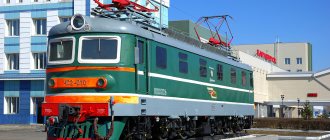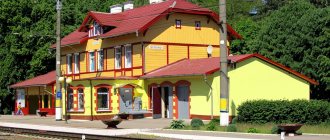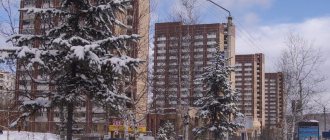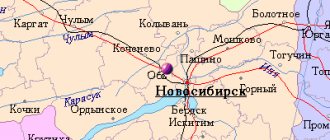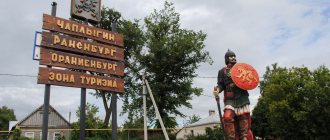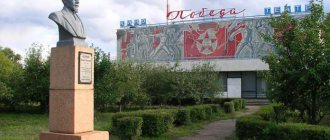For other places with the same name, see Yasnogorsk.
City in Tula region, Russia
| Yasnogorsk Yasnogorsk | |
| City [1] | |
| Lenin Square in Yasnogorsk | |
| Coat of arms | |
| Location of Yasnogorsk | |
| Yasnogorsk Location of Yasnogorsk Show map of Russia Yasnogorsk Yasnogorsk (Tula region) Show map of Tula region | |
| Coordinates: 54°30'N 37°40'E / 54.500°N. Latitude 37.667°E / 54,500; 37.667 Coordinates: 54°30'N 37°40'E. / 54.500 ° N Latitude 37.667°E / 54,500; 37,667 | |
| A country | Russia |
| Federal subject | Tula region [1] |
| Administrative region | Yasnogorsk district [1] |
| City of district subordination | Yasnogorsk [2] |
| Known since | 1578–1579 |
| City status from | 1958 |
| Height | 240 m (790 ft) |
| population size (2010 Census) [3] | |
| • General | 16 795 |
| • Evaluate (2018) [4] | 15 706 (-6,5 % ) |
| Administrative status | |
| • Capital from | Yasnogorsk district [1], city of Yasnogorsk district jurisdiction [5] |
| Municipal status | |
| • Municipal district | Yasnogorsk municipal district [6] |
| • Urban village | Urban settlement Yasnogorsk [6] |
| • Capital from | Yasnogorsk municipal district [6], urban settlement Yasnogorsk [7] |
| Timezone | UTC+3 (MSK[8]) |
| Postal code [9] | 301030–301032 |
| Dialing code(s) | +7 48766 |
| OKTMO ID | 70650101001 |
Yasnogorsk
(Russian: Yasnogorsk) is a city and the administrative center of Yasnogorsk District in Tula Oblast, Russia, located on the Vashana River (Oka's tributary), 35 km (22 mi) north of Tula, the administrative center of the region. Population: 16,795 (2010 census); [3] 18,588 (2002 census); [10] 21,292 (1989 census).[11]
Economics [edit]
Yasnogorsk machine-building plant
builds parts for cars, pumps and locomotives for the Russian mining industry. The factory opened in 1895; Along with jobs, the factory provided social services; in 1991, factory owners gradually cut back on these services. Fewer than 280 people were hired in 2009, down from a peak of 7,000. [12]
The city lags behind other urban centers in the region both economically and socially, and its population is steadily declining.
Yasnogorsk
Together with Masha Kucherova we are going to the homeland of MrNobody.
— Yasnogorsk is a very small, young city, but already with its own interesting legends and stories. And he gladly told us all of them.
This town has a very bright and beautiful, sunny name. And what a joy we were when it turned out that the people who live here are also sunny, friendly and hospitable! The Yasnogorsk residents happily talked about their small homeland. By the way, they call their city with love: “Clear”.
The journey around Yasny began with the local history museum. Indeed, where else can you get to know the city better? There we were met by the director of the museum, Marina Modei.
The excursion began as standard: the flora and fauna of the area, war times, peasant life...
And suddenly - a varied collection of bast shoes of all sizes and shapes.
It turned out that this was not at all accidental. The fact is that the settlement used to be called Laptevo. And a very unusual and beautiful story is connected with it.
According to legend, the Great Empress Catherine the Second passed through these places and stopped to rest at a station with the simple name Rostislavo. And local craftsmen presented the high-ranking guest with an elegant silver bast shoe.
Then the empress ordered to name this settlement Laptevo. Whether this is true or not, no one knows. However, residents are happy to tell this story to all guests of the city.
But these are not all the surprises that the local history museum has prepared for us. We were invited to a room of Soviet life. It seems that the staff installed a time machine on its threshold: a real room from the times of the USSR opened before us.
All the things that fill it are so dear and familiar! In the same closet I played hide and seek with my grandmother, and I admired this set with a fish decanter as a child, but I learned my first syllables using this primer, and this is the mascara my mother used to apply makeup before work...
In general, if you really, really miss the warmth and nostalgia of that time, welcome to this museum.
“This room was formed completely spontaneously,” said Marina Modey. “One of the city residents had an old chest of drawers at home that took up quite a lot of space, but she didn’t want to throw it away. Then the woman gave it to us, and we accepted it with pleasure. And gradually they began to “overgrow” with all sorts of things “from grandma’s chest.” That’s how the idea came to mind to make an exhibition dedicated to the USSR. As you can see, it is of great interest!
And then Marina Mikhailovna offered to show us another museum - it is dedicated to the history of the Laptevo railway station. This is where the city began.
The museum is located at the station, which, by the way, was recently restored and has already become a favorite place for Yasnogorsk residents. Guests are greeted here by a snow-white rotunda with a monument to Catherine the Second.
In her hand, of course, are those same legendary bast shoes. And on the site of the station chief’s house a small exhibition opened.
In one part of it there is a huge model of Laptevo from the 19th century: a station and small houses in which merchants settled who began to build the city.
One of them was the entrepreneur Ippolit Alekseevich Golovin, who in the fall of 1895 moved his plow manufacturing establishment from the village of Peshcherovo to the village of Vladychino near the Laptevo railway station. This was the beginning of a huge machine-building plant, known throughout the USSR.
But the town received its new name only in 1965. They say there were a lot of options offered. But this euphonious one was chosen for its location: the city stands on a hill.
So on a sunny day, every corner of it is illuminated. The second room of the small museum is dedicated directly to the railway itself. The compartment of an ancient train in which a pious gentleman and a beautiful young lady are traveling is recreated here.
And outside the “window” (there is a television panel hanging instead) cities flash by: visitors are shown a short film, which, when viewed, creates the feeling of a train journey. Very exciting!
The Yasnogorsk region is famous not only for the legend about Catherine and the railway station. In the village of Fedyashevo at the end of the 19th century, the estate of Leonid and Maria Hartung flourished. Leonid Hartung was the manager of the Imperial stud farms in Moscow and Tula. The horses from the Hartung stables (in Fedyashevo, Prilepakh and Voronezh) were known throughout the world and performed at the hippodromes of England, France and Germany! But Maria Hartung was the maid of honor of Empress Maria Alexandrovna, wife of Alexander II. But she is more famous as the daughter of Alexander Sergeevich Pushkin and Natalya Goncharova. By the way, it was she who became the prototype of Anna Karenina. Leo Tolstoy really admired her beauty! But Mary became precisely the external prototype. The character and fate of Karenina in no way intersect with hers. Upon arrival in Fedyashevo, it turned out that these days the estate is a ruin.
The two-story house (or rather, what’s left of it!) is still amazing in size: on the first floor there were once rooms for servants and guests, Hartung’s office, a huge library and a fireplace, and on the second there were 11 large halls! Interestingly, the house was built according to the personal design of the owner.
According to the director of the Yasnogorsk Museum of Local Lore, this building has now been purchased by Muscovites who plan to recreate its historical appearance. All we have to do is wait!
Yasnogorsk saw us off with the sudden sunshine, as if confirming its name and inviting us to return to its glorious places.
Want to share your “travel stories”? Write in a personal message to Tatyana Afanasyeva And long live our common endless and cheerful “Gulbari”!
Already published gulbaria for the Tula region:
Aleksin Belev Belev-2 Bogoroditsk Byaki Venev Donskoy Epifan Efremov Krapivna Kolosovo Bald Mountain Novomoskovsk Odoev Perevoloki-Return Torture Tarusa Uzlovaya Manor house Berov Fedyashevo Khruslovka Chekalin
Gallery
show all photos
117
Links[edit]
Sources [edit]
- ^ abcde Law No. 954-ZTO
- ^ ab Law No. 954-ZTO defines a city of regional subordination as a city that is part of one of the districts of the region. OKATO lists Yasnogorsk as part of the Yasnogorsk district and separately from other administrative units of the district.
- ^ a b Federal State Statistics Service (2011). “All-Russian Population Census 2010. Volume 1" [All-Russian Population Census 2010, vol. 1]. All-Russian Population Census 2010 [All-Russian Population Census 2010]
. Federal State Statistics Service. - "26. The size of the permanent population of the Russian Federation by municipalities as of January 1, 2022". Federal State Statistics Service. Retrieved January 23, 2022.
- State Committee of the Russian Federation on Statistics. Committee of the Russian Federation for Standardization, Metrology and Certification. No. OK 019-95 January 1, 1997 “All-Russian classifier of objects of administrative-territorial division. Code 70 250 501”, ed. changes No. 278 / 2015 dated January 1, 2016. (Goskomstat of the Russian Federation. Committee of the Russian Federation for Standardization, Metrology and Certification. No. OK 019-95 January 1, 1997. Russian classification of administrative divisions) (OKATO).
Code 70 250 501 , as amended by Amendment No. 278/2015 of January 1, 2016). - ^ abcd Law No. 539-ZTO
- Federal State Statistics Service. Federal Agency for Technological Regulation and Metrology. No. OK 033-2013 January 1, 2014 “All-Russian classifier of municipal territories. Code 70 650 101 ". (Federal State Statistics Service. Federal Agency for Technological Regulation and Metrology. No. OK 033-2013 dated January 1, 2014. Russian classification of municipal territories. Code 70 650 101.
). - "On the Calculation of Time". Official Internet portal of legal information
. June 3, 2011. Retrieved January 19, 2022. - Post office. Information and computing center of OASU RPO. ( Post office
).
Search for postal service objects ( postal Search for objects
) (in Russian) - ↑
Federal State Statistics Service of Russia (May 21, 2004).
“The population of Russia, the constituent entities of the Russian Federation as part of federal districts, urban settlements, settlements, settlements is 3 thousand or more people” [Population of Russia, its federal districts, federal districts, districts Urban settlements, rural settlements - administrative centers and rural settlements with a population of over 3,000] (XLS). All-Russian Population Census 2002
. - “All-Union Population Census of 1989. The current population of union and autonomous republics, autonomous regions and districts, territories, negative phenomena, urban settlements and rural district centers” [All-Union Population Census of 1989: current population of union and autonomous republics, Autonomous regions and districts , territories, regions, districts, urban settlements and villages performing the functions of district administrative centers. All-Union Population Census of 1989 [All-Union Population Census of 1989]
.
Institute of Demography of the National Research University: Higher School of Economics [Institute of Demography of the National Research University: Higher School of Economics]. 1989 - via Demoscope Weekly
. - "Russian cities with one factory may not survive". Manufacturing.net. Archived from the original on August 25, 2011. Retrieved September 4, 2009.



